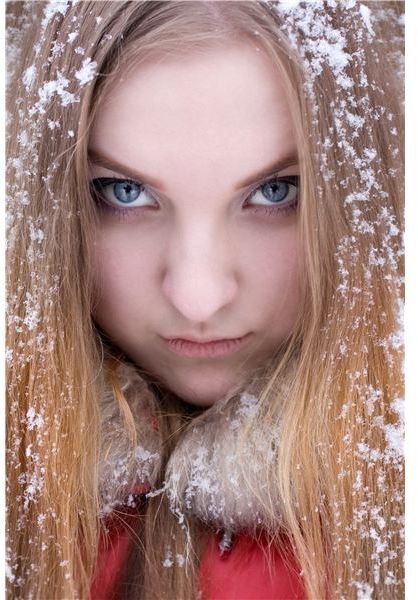All About the Eyes: Photography Basics
Eyes Photography
Throughout history, people have taken great pride in the appearance of their eyes. Others believe eyes give insight into the inner person. This leaves the question, how do you capture the eyes on film –traditional or digital– in all their glory?
Keep reading for the best practices when photographing the eyes…
(Image: https://www.sxc.hu/photo/1187208/)
Explain your Motive for Photographing the Eyes
Before you start the photo shoot, explain to the subject that you will be photographing her eyes and what you hope to accomplish by doing so. Let her know what emotions you hope to portray in the photograph and explain your choice of focus from an artistic standpoint. When you are ready to begin shooting, tell your subject that, because you are just photographing her eyes, she can relax the rest of her body and concentrate only on what her eyes are doing.
The Use of Props
In eyes photography, the use of minimal props is sometimes useful. Some photographers like to wrap the subject’s face leaving only the eyes visible when photographing. This tends to work well as it removes all distractions from the shot. However, your subject may not be comfortable being “wrapped up” this way. To be on the safe side, be sure that your subject is wearing a basic outfit with neutral tones on the day of the shoot and make use of your cameras zoom function as much as possible.
When photographing the eyes, the shot can include just the eyes or more of the upper body with a strong emphasis on the eyes. In this case, neutral-toned clothing can help minimize any distractions in the frame. Remember, your focus is on the eyes. The viewer should immediately be drawn to the subject’s eyes and not get distracted by anything else in the frame.
Camera Settings
How you set up your camera to take your portrait of the eyes is up to you. Many will opt for basic portrait settings while others will want to tweak their settings further, taking into account factors such as catchlight, composition and focus. Whenever you are able be sure to shoot in camera RAW, you have the most freedom when tweaking the photograph in your digital darkroom (your office) following the photo shoot.
A few of the more important camera settings you should take into account are aperture, ISO and shutter speed. One thing that should be avoided is the use of your on-camera flash. This direct flash tends to cause redeye, and the use of a much softer fill light is recommended. Try bouncing your light source off a wall or ceiling to soften the light that makes it to the subject’s eyes.
More on Catchlights
A catchlight in its most basic form is simply a light source reflected in a subject’s eyes. Catchlights can add depth and personality to your portrait photography, and when used correctly, can add value to your portrait photographs. Catchlights can be a variety of shapes and sizes depending on the light source that is being reflected in the subject’s eyes. For a more detailed explanation of what catchlights are and how they can be used to improve your eyes photography please see “Catchlights - Definition, Importance & Tips.”
The Windows to the Soul

There is a reason the eyes are often called “the windows to the soul.” So much emotion can be expressed through the eyes alone. As the photographer, your job is to pick up this emotional reaction from your subject. The best way to do this is through communication with your subject. Start a conversation about his children, how he met his significant other or his best childhood memory and you may be surprised at the changes you see in his eyes. Be sure to have your camera ready so that when these emotions arise you are ready to snap away and not miss that perfect shot!
I also find that asking a person to think of a happy or painful memory or something that made him angry can also be a great way to change the look of the eyes. Depending on what emotions you want to portray, you will have to approach your subject using different techniques to trigger that emotion in his eyes.
(Image: https://www.sxc.hu/photo/1338382)
Photograph Composition
You have the choice of zooming in on the subjects eyes during the photo shoot using your cameras zoom or getting closer to your subject to fill your frame, or using a little less zoom and taking care of the composition during post-processing. In my opinion, it is best to try to fill your frame with the intended focus during the photo shoot to minimize the amount of post-processing needed and generally to get the best shot. Not all photographers will agree with this, and in many cases even if you do this the photograph will require some tweaking via photo manipulation software to solidify the focus of the shot after it’s been taken, but I have had the most success approaching eyes photography in this way.
Conclusion
As with all photography, these are just some general guidelines to get you started. Once you have it set in your mind what you want to do and your subject and equipment ready to go, your only limitation is your creativity. Do not be afraid to experiment with lighting, composition, angles and such. In the end, even if you take 50 shots of the eyes to get that one perfect shot, it will be worthwhile. As you take more photographs that have a strong focus on the eyes, you will develop your own best practices and decide what works best for you. The most important thing is that your subject and you enjoyed the photo shoot and the photographs turned out amazing.
Are you a photographer that has some expertise in eye photography? Share your tips and tricks in the comments section below!
References
- Author’s own experience.
